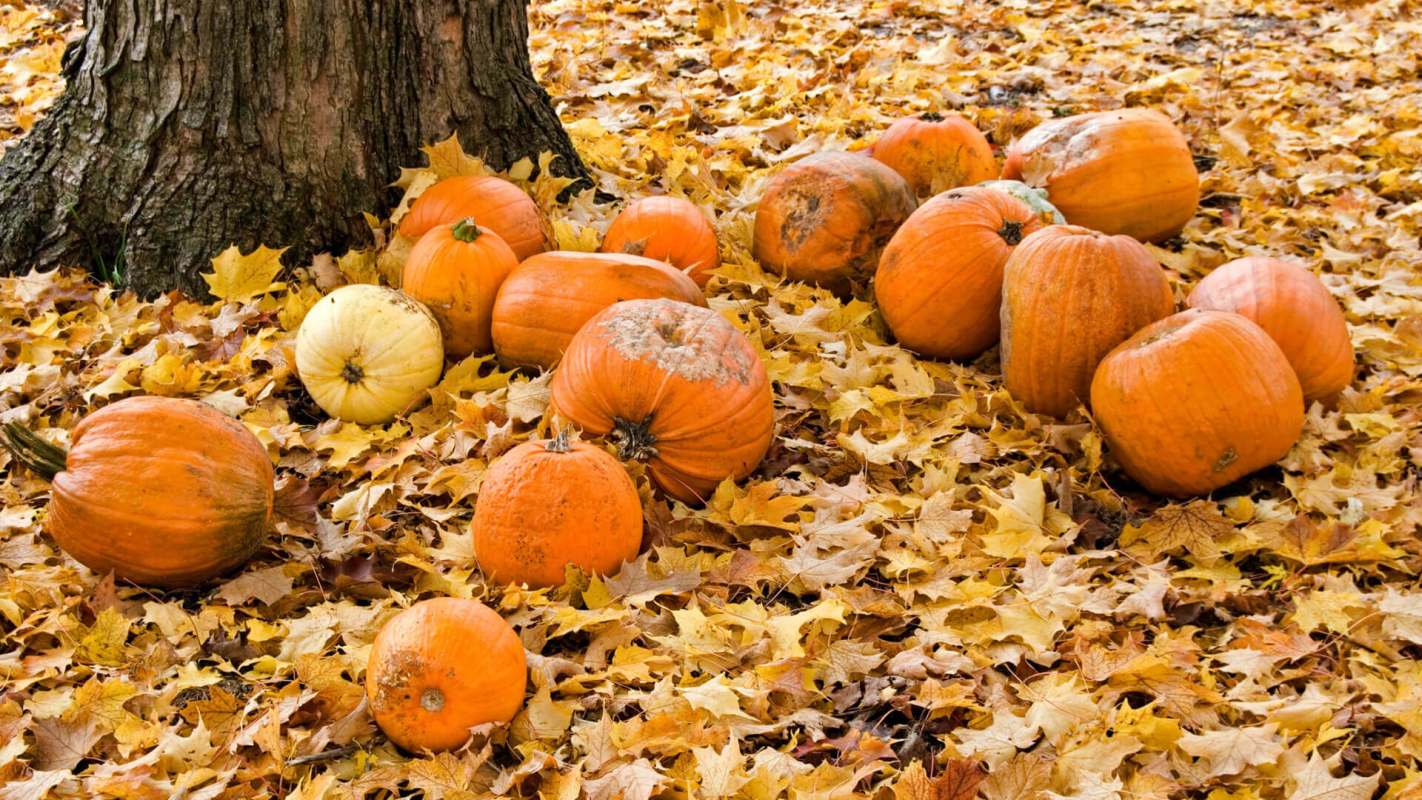As November rolls around, we say goodbye to Halloween by pulling the fake cobwebs off our porches, stashing away our fall-scented candles, and contemplating the pounds of leftover trick-or-treat candy in our pantries.
But what happens to pumpkins after Halloween? Many of us just throw our jack-o'-lanterns in the trash, which is how Halloween pumpkins end up adding a whopping 1.3 billion pounds of waste to landfills each year.
In the U.S., just under 2 billion pounds of pumpkins are produced each year. That means a majority of our pumpkins are grown essentially to sit on a porch for a few weeks.
Those pumpkin graveyards are more than a little spooky. As they break down, pumpkins release methane gas, a harmful substance that is 25 times more potent than carbon pollution.
The problem has gotten bad enough that, in 2016, the U.S. Department of Energy released a memo warning would-be-Halloweeners about the downsides of throwing away their pumpkins.
So what happens to all those landfill-bound pumpkins? And what other options do we have? Here's what to know before you break out the carving knives this October.
What happens to pumpkins after Halloween?
Once a pumpkin hits the trash can, it's almost certain to end up in a landfill. There, it will decompose and begin releasing methane gas, which contributes heavily to rising global temperatures by trapping heat inside Earth's atmosphere, worsening extreme weather events like hurricanes that pose a threat to our communities.
Still, it's not just the methane that causes a problem. Pumpkins are considered "thirsty" plants, and it takes a good amount of water to grow them.
For pumpkins that are never eaten or used for anything beyond, say, a glowing replica of Baby Yoda, that means that the water used to grow them mostly goes to waste. That's in addition to resources like energy and human labor which could be used to grow more of the produce we eat.
What's the best way to dispose of them?
The most simple solution, of course, is to eat as much of the pumpkin as you can. This could mean baking the seeds and turning them into an afternoon snack, or using the pulp to make pumpkin bread, pumpkin pie, pumpkin hummus, or any number of other uses.
Still, to get the most out of your pumpkin, composting is your best bet. Pumpkins are 90% water, and when properly broken down, they can be used to give tons of water and nutrients back to the Earth.
You don't have to have your own composting setup, either. There are now several organizations — including Scarce, which composts well over 100,000 pounds each year — dedicated to collecting and breaking down leftover jack-o'-lanterns.
If you don't have one of those organizations in your area, you still have options.
You can actually compost pumpkins with no equipment at all. Once you've removed any seeds, as well as candle wax and other decorations, start breaking the pumpkin into pieces. Then, bury the pieces in your garden, where it will enrich the soil with its water and nutrients.
Pumpkins are always going to be a staple in Halloween home decor — it's worth taking the time to learn how to properly dispose of them.
Follow The Cool Down on Instagram and TikTok.








